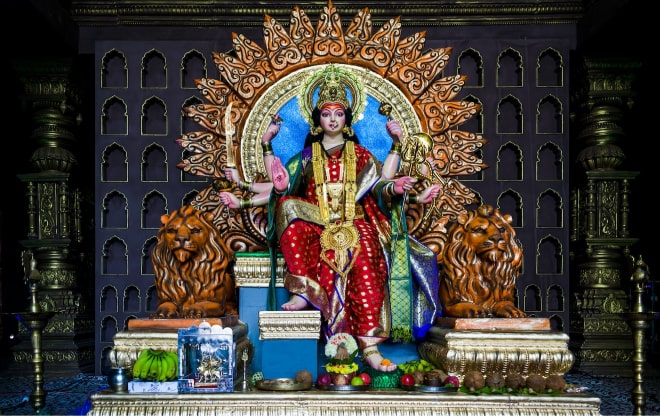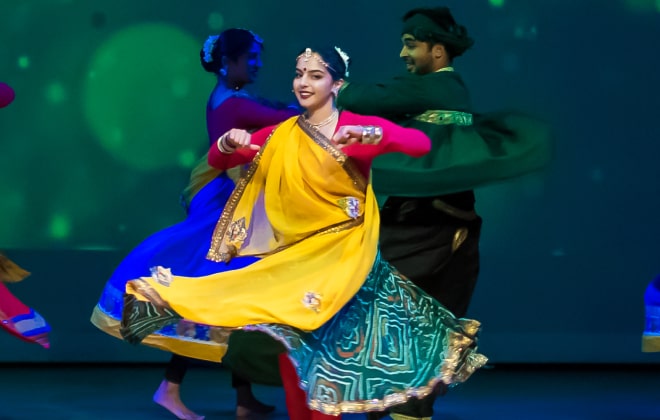Originating in Gujarat, Garba is a form of dance that honors, worships, and celebrates the feminine form of divinity. Garba, also known as Garbha, Garbha Deep, and Garbhi, varies with local language dialects. Garba dancing also takes place during the nine-day Navratri festival, held annually during the Hindu month of Ashvina (September–October). Although men may participate, it is predominantly performed by women.

The word "Garba" comes from the Sanskrit word garbha, meaning "womb." Traditionally, the dance is performed by women in a circle around a clay lantern with a light inside, called a garbha deep ("womb lamp"). The garbha deep has another symbolic interpretation. The vessel itself is a symbol of the body, within whom divinity (in the form of the Goddess or Devi) resides. Garba is danced around this symbol to honor the fact that all humans have the divine energy of Devi within them. Dancing in a circle also stands for phases of time in life and space.
Garba is performed barefoot, which signifies respect for the earth upon which people walk. Garba performances often include singing and a musical accompaniment traditionally provided by dhol (double-headed drum) and the similar but smaller dholak, hand clapping, and assorted metallic cymbals.
The folk dance events of Garba consist of different Gujarati dance forms unified to create a snap, clap, twirl style. The performers circle an image of a mother goddess, such as Durga, or around a symbolic representation of her creative energy—often an illuminated clay pot or a water-filled vessel. Dancing begins slowly and gradually increases in speed. Taali Garba and Tran Taali Garba are two dance form variants and implement 2-clap Garba and 3-clap Garba patterns.

The traditional male costume is Kediyu, consisting of a Kafni pajama, a round kurta, and a turban embellished with sequins for the head. The dupatta or odhani is an ornate piece of cloth draped around the head. Women wear Chaniya Choli, a three-piece dress with an intricately embroidered blouse with beads, tiny mirrors, and shells, and a flared, long skirt with similar decoration.